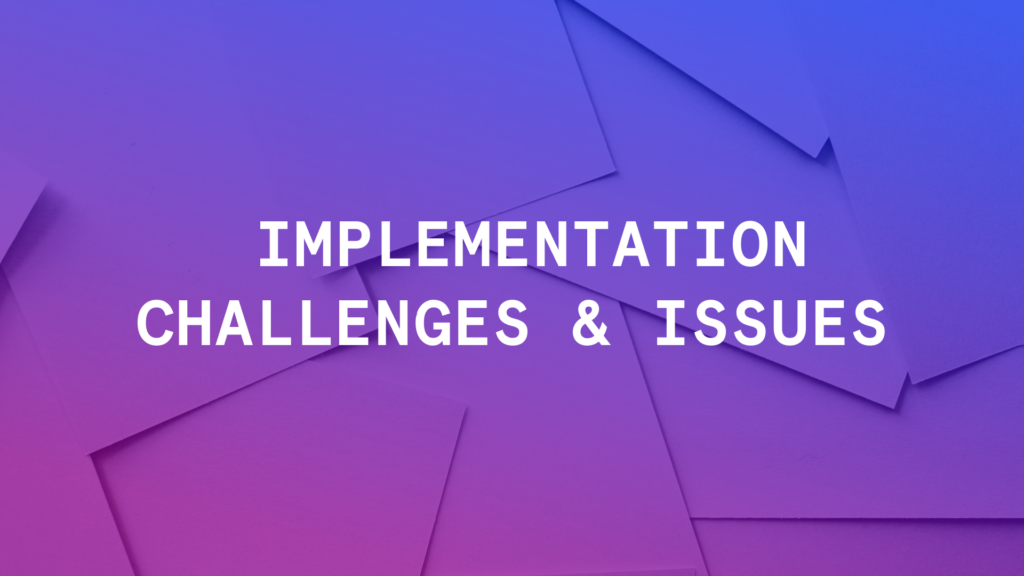by Lee Dussinger
Without a good plan and the right playbook, even the most promising software can fail to gain traction among teams. Implementing new software at an organization is a great example of “easier said than done”. We’re digging into the common software implementation challenges – and highlighting how to remedy them.
At Opal, we’re an enterprise marketing platform that brands like Target, GM, Starbucks, and UHG use to plan their marketing. Since Opal is a sophisticated software solution used by these large enterprise organizations, our teams are experts in successful software implementation.
We’re highlighting what we’ve learned from studying the most common software implementation issues as well as sharing wisdom we’ve earned from onboarding a variety of teams.
7 Reasons Why Software Implementation Fails

While Opal primarily supports enterprise brands, we have customers of every size. The software implementation challenges we’re highlighting here can be found across industries and among organizations of all sizes. There may be more edge-cases or other reasons, but these are the most common reasons why software implementations fail:
Challenge 1: Employee Resistance to Change
This is one of the most common software implementation issues. Simply put, onboarding new software is nearly impossible if the end users aren’t interested. Resisting this change often stems from comfort with existing workflows and confusion over the new steps. There’s no way to have a successful internal software launch without getting the employees who will be working with it on board.
Answer: This requires motivation to change…in the form of internal selling. Whether internal selling is something that the software stakeholder handles – or a representative from the software company does it – it’s crucial. When you highlight the benefit the people can expect to get, they’ll be more willing to do the change management that comes along with it.
Challenge 2: Lack of Professional Support
There will be software implementation challenges along the way – that is a guarantee. How the software team handles those hiccups plays a crucial role in the success of the onboarding. When trying to bridge the change management process, the right support makes all the difference. For large organizations with many teams (and team members with different learning styles), a successful rollout still relies on having knowledgeable support available when needed. Ultimately, trying to onboard without a support team is a recipe for software implementation challenges.
Answer: The software provider must support the implementation within a multidisciplinary team. Here are the roles and functions that need to be filled:
- Managing the implementation project – Typically handled by an implementation manager, this entails managing the key steps, while ensuring milestones and deadlines are met.
- Training users – Instruction on essential platform functions can be led by dedicated trainers or the implementation manager.
- Strategic guidance – This is a key function of the customer success manager role.
- Address platform issues – Whether it’s platform bugs or implementation issues, a support team should address these.
Challenge 3: No Leadership Buy-In/Sponsorship
For large-scale organizations, implementing a new software without an internal champion is an uphill battle. Without that leadership support, managers and teams may not take the mandates to implement the new software seriously. It’s not uncommon for teams to see the mandates around new software as a suggestion rather than a workflow requirement. This can mean sparse attendance at trainings, low adoption, and little interest in changing workflows.
Answer: Find a leader who can reinforce the value your new software brings. You should be able to rely on this sponsor to proactively sell to managers and ICs alike. As one Opal executive sponsor says, “If content isn’t in Opal, then it isn’t real to me.” Without buy-in from an executive sponsor, it can be hard to get the focus needed for a successful implementation. It’s best if this individual is a senior leader, as they will have the clout to clear roadblocks, set priorities, and even advocate to other leaders.
Challenge 4: Integration Roadblocks
When bringing a software solution into an enterprise tech stack, navigating relationships with pre-existing pieces of technology is key. Oftentimes this means the new software needs to integrate with the tools the team already trusts. Not connecting to other relevant tools can create dynamics that exacerbate change management challenges. For example, if a tool isn’t sharing key data or information, it can lead to tedious busywork or extra steps. Any early hiccup like this can reflect poorly on the solution, and it can cause resistance towards the implementation as a whole.
Answer: To prevent this software implementation issue, the integrations need to be determined before the contracts are signed and before users are in the platform. This requires software providers to make genuine investments into integrations – just like other features. Looking into the integrations a software system has is a crucial step in evaluating that platform.
Challenge 5: Lack of Product Education
Another reason why software implementation fails is the lack of education around the new software. Even if the team has bought into the potential of the new system, without the right education resources, they’ll be unable to actually use it effectively. When there is uncertainty about the basics of how software works, you have a huge barrier to adoption. The lack of good resources exacerbates this! Consider how difficult it is for busy employees to dedicate hours to learning a new software – while also doing their main job.
Answer: The software vendor should be the one to provide the training materials to the customer. They know their software better than anyone – and they can anticipate the challenges that users will have when onboarding it. Since everyone learns differently, the best user education programs are ones that incorporate different training methods. For example, Opal’s education program features components of whole-team webinars, one-on-one office hours, and on-demand resources (like help center articles and tutorial videos).
Challenge 6: Misaligned Expectations
This software implementation challenge actually begins long before the contracts are signed and the first seats are filled. When software vendors sell an unrealistic outcome that the platform can’t deliver, customers will bristle at the actual capabilities of the software. In extreme cases, this mismatch of expectations can stop the implementation dead in its tracks.
Answer: There is no simple answer here. While software vendors should never (and rarely do) sell smoke and mirrors to land a deal, it can happen. The only way to circumvent this is to explore the real product during the sales process.
Challenge 7: Poor Implementation Planning
While all 6 previous reasons why software implementations fail are relevant, this is the most common one. Many software companies operate under the idea that implementation can’t be planned out in advance since every customer is different. While there will always be modifications to the plan, going in without including any clear goals, materials, timelines, and responsibilities is a recipe for failure.
Answer: Create a playbook for how your organization approaches implementation. Start by studying past implementations – both successful and failed. From there you can create (or adapt) a playbook that forms the backbone of your plan.
Looking for a place to start? We’re about to share our implementation playbook!
Implementation Playbook Webinar
Our implementation team has helped a range of small and enterprise organizations successfully onboard Opal. Years of refining our processes around software implementation has enabled us to develop a playbook for successful software onboarding. While there is certainly no “one-size-fits-all” approach to some of the most complex organizations in the world, we have created a proven framework from which we build. This is how we are able to handle all of these software implementation challenges.
For the first time, we’re shared this implementation playbook with the world. We encourage both software implementation teams and marketing ops professionals to join our debut webinar.
Learn More about the Opal Platform
Opal is where marketing comes together. Purpose-built for marketers, it has earned the trust of esteemed brands such as Target, Starbucks, and GM. Opal enables you to plan, create, and arrange your content in a single location. Additionally, Opal has an AI assistant to empower you to work faster and drive more impact.
If you want to experience Opal for yourself, you can book a personalized demo to get acquainted with its features. At the demo session, an expert will exhibit how Opal fulfills your specific marketing requirements.


